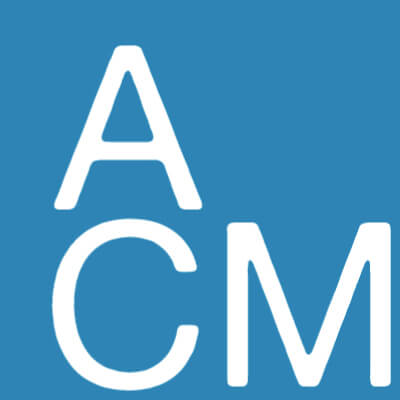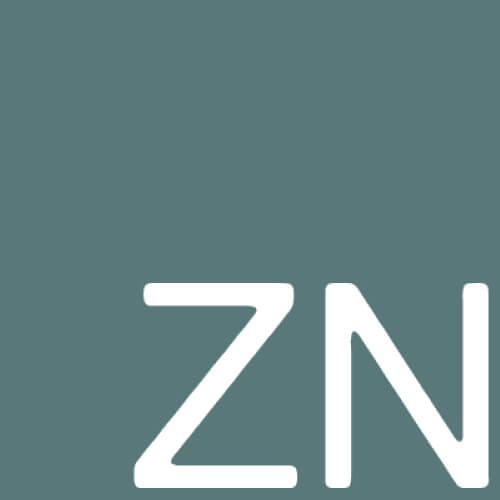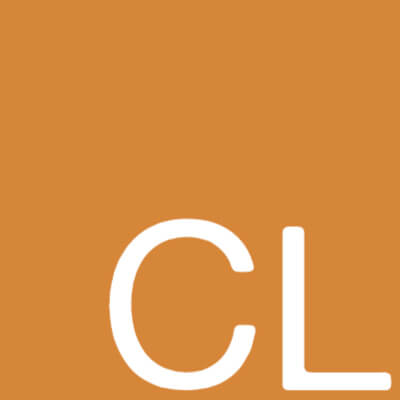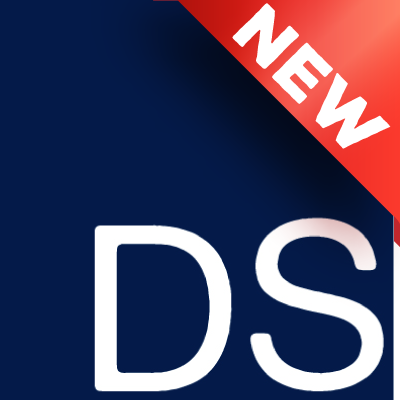ACM SPECIFICATION GUIDE
SECTION 07 42 43 - Composite Wall Panels
NorthClad® ACM Panel System
Published: 07/2018
PART 1 GENERAL
1.1 SUMMARY
Section Includes:
Composite wall panel dry joint, pressure-equalized rainscreen system.
Accessories including sub girts, aluminum panel splines, aluminum panel bases, head flashings, clips, shims, fasteners, and aluminum trim prefinished to match aluminum wall panels.
Related Sections:
-
Section 05 40 00 – Cold-Formed Metal Framing
Section 06 10 00 – Rough Carpentry
Section 06 16 43 – Gypsum Sheathing/p>
Section 07 25 00 – Air Barriers
Section 07 62 00 – Sheet Metal Flashing and Trim
Section 07 92 00 – Joint Sealants
-
1.2 REFERENCES
Reference Standards: Current edition at date of Bid.
American Architectural Manufacturers Association (AAMA):
AAMA 501.1 – Standard Test Method for Water Penetration of Windows, Curtain Walls and Doors Using Dynamic Pressure.
AAMA 508-07 – Voluntary Test Method and Specifications for Pressure Equalized Rain Screen Wall Cladding Systems.
ASTM International:
ASTM B 117 – Standard Practice for Operating Salt Spray (Fog) Apparatus.
ASTM B 209 – Standard Specification for Aluminum and Aluminum-Alloy Sheet and Plate.
ASTM D 294 – Method of Tumbler Test for Coke.
ASTM D 659 – Method of Evaluating Degree of Chalking of Exterior Paints.
ASTM D 882 – Standard Test Method for Tensile Properties of Thin Plastic Sheeting.
ASTM D 968 – Standard Test Methods for Abrasion Resistance of Organic Coatings by Falling Abrasive.
ASTM D 2244 – Standard Practice for Calculation of Color Tolerances and Color Differences from Instrumentally Measured Color Coordinates.
ASTM D 2247 – Practice for Testing Water Resistance of Coatings in 100% Relative Humidity.
ASTM D 3352 – Standard Test Method for Strontium Ion in Brackish Water, Seawater, and Brines.
ASTM E 84 – Standard Test Method for Surface Burning Characteristics of Building Materials.
ASTM E 283 – Standard Test Method for Determining Rate of Air Leakage Through Exterior Windows, Curtain Walls, and Doors Under Specified Pressure Differences Across the Specimen.
ASTM E 330 – Standard Test Method for Structural Performance of Exterior Windows, Doors, Skylights and Curtain Walls by Uniform Static Air Pressure Difference.
ASTM E 331 – Standard Test Method for Water Penetration of Exterior Windows, Skylights, Doors, and Curtain Walls by Uniform Static Air Pressure Difference.
1.3 ADMINISTRATIVE REQUIREMENTS
Coordination: Conform to provisions of Section 01 31 13 for coordination with work of other Sections.
Section 07 25 00 for application of weather resistive barrier over exterior sheathing substrate specified.
Section 06 16 43 following installation of sub girt system as required to seal and make a continuous air barrier.
Preconstruction Meetings: Conform to provisions of Section 01 31 19.
Attendance: Contractor, Applicator, Owner, Architect, and those specifically requested to attend.
Review and finalize construction schedule and verify availability of materials, installer’s personnel, equipment, and facilities needed to make progress and avoid delays.
Review methods and procedures related to aluminum composite panel installation, including manufacturer’s written instructions.
Examine support conditions for compliance with requirements, including alignment between and attachment to the structural members.
Review flashings, special details, wall penetrations, openings, and condition of other construction that will affect aluminum wall panels.
Review temporary protection requirements for aluminum composite wall panel assembly during and after installation.
Review wall panel observation and repair procedures after aluminum wall panel installation.
Meeting Time: Minimum 3 weeks prior to commencement of work covered by this Section and any related work affecting work covered by this Section.
Meeting Location: Project Site.
1.4 DESIGN REQUIREMENTS
Components: Designed and manufactured to withstand dead and live loads caused by positive and negative wind pressure acting normally to plane of composite wall panels.
Wall Panel Deflection: L/180.
Perimeter Framing Deflection: L/180.
Thermal Movement: Design system to accommodate vertical and horizontal thermal movement of components without causing distortion, excessive stress on fasteners, or oil canning when subjected to recurring temperature variations.
Drainage: Design for positive drainage of water leakage and condensation to exterior of wall panel system.
Tolerance of Substructure: Design system to accommodate up to 1/4 inch in 10 feet variation out of plane.
Seismic Design: Conform to International Building Code for the Seismic Category appropriate for location of system installation.
1.5 PERFORMANCE REQUIREMENTS
Provide the following testing documentation: Testing documentation must be current and meet or exceed specified design and performance requirements, and must be documented and certified by an independent testing agency acceptable to Architect and applicable building code jurisdiction.
Preload at +12.5 pounds per square foot.
Air Infiltration in accordance with ASTM E 283 (at 1.57 pounds per square foot): 0.117 cubic feet per minute per square foot.
Water Penetration in accordance with ASTM E 331 (at 6.24 pounds per square foot): Approximately 0.3 square feet.
Water Penetration in accordance with AAMA 501.1 (at 6.24 pounds per square foot): Approximately 0.8 square feet.
Static Pressure Air Infiltration (at 6.24 pounds per square foot): Less than 0.01 cubic feet per minute per square foot.
Static Pressure Water Resistance (at 15 pounds per square foot): No uncontrolled leakage.
Uniform Load Deflection:
At +25.0 pounds per square foot design load: No damage.
At -25.0 pounds per square foot design load: No damage.
Repeat Static Pressure Air Infiltration:
At 6.24 pounds per square foot: Less than 0.01 cubic feet per minute per square foot.
At 15.00 pounds per square foot: No uncontrolled leakage.
Dynamic Pressure Water Resistance (at 15 pounds per square foot): No uncontrolled leakage.
Pressure Equalized Rainscreen:
Interstory Horizontal Displacement (drift):
At 3/4-inch left/right: No visible damage.
Interstory Horizontal Displacement (maximum):
At 3.0 inches left/right: No visible damage.
Repeat Static Pressure Air Infiltration:
At 6.24 pounds per square foot: Less than 0.01 cubic feet per minute per square foot.
At 15.00 pounds per square foot: No uncontrolled leakage.
Uniform Structural Overloads:
At +37.5 pounds per square foot (Overloads): No damage.
At -37.5 pounds per square foot (Overloads): No visible damage.
1.6 SUBMITTALS
Submit under provisions of Section 01 33 00.
LEED Credits: Conform to Section 01 81 13 for documentation of LEED Credits contributing to Certification of Project under USGBC LEED 2009 (Version 3.0) Green Building Rating System for Sustainable Building Requirements.
Buy American Act Certification: Submit documentation certifying that products comply with provisions of the Buy American Act 41 U.S.C. 10a-10d.
Product Test Reports: Indicate compliance of products with requirements from qualified, independent testing agency.
Shop Drawings:
Provide detail drawings prepared by manufacturer or manufacturer’s authorized agent showing openings and penetrations.
Include details of each condition of installation and attachment.
Provide details at a minimum scale of 1-1/2 inch per foot of all required trim needed for complete installation.
Provide shop drawings reflecting deviations from manufacturer’s standard details and details differing from Contract Documents.
Include components, metal panel profile(s), dimensions, joinery dimensions, configurations, and reason for deviation.
Product Data:
Manufacturer’s technical data, installation instructions, standard detail drawings specific and manufacture qualification letter including past projects
Product Samples: 2-inch x 3 inch showing specified finish for each specified wall.
Manufacturer’s Instructions: Indicate installation requirements, rough-in dimensions, special procedures, and conditions requiring special attention.
Sample Warranty: Meet or exceed provisions specified by this Section.
1.7 QUALITY ASSURANCE
Manufacturer Qualifications:
Minimum of 10 years’ experience in fabricating and supplying metal wall panel systems.
Responsible for technical design support as required for system conforming to panel manufacturer’s warranty provisions.
Provide review and approval of shop drawings differing from panel manufacturer’s standard details prior to installation and conduct interim inspections during construction.
Installer Qualifications:
Able to document a minimum 7 years’ experience installing commercial metal wall panel systems.
Employ job-site foreman, with minimum of 3 years’ experience supervising installation of metal wall panel work of this Section, dedicated to Work of this Contract.
Foreman: Continuously on site for duration of work of this Section for this Project.
Single Source Responsibility:
Perform metal panel and related flashing and sheet metal work by or under supervision of single installer.
1.8 WARRANTY
Provide Warranties under provisions of Section 01 78 36.
Manufacturer Coating Performance Warranty: 20-year warranty against fading, color change, chalking, peeling, cracking, or delaminating of the coating system. Can vary by finish selection.
Contractor: 5-year labor warranty for panel installation, including, flashings, sealants, fasteners, and accessories to remain functioning.
1.9 DELIVERY, STORAGE, AND HANDLING
Deliver components, sheets, aluminum wall panels, and other manufactured items to prevent damage or deformity.
Package aluminum wall panels for protection during transportation and handling.
Unload, store, and erect aluminum wall panels in a manner to prevent bending, warping, twisting, and surface damage.
Store aluminum wall panels vertically, covered with suitable weather tight and ventilated covering.
Store aluminum wall panels to ensure dryness, with positive slope for drainage of water.
Do not store aluminum wall panels in contact with other materials that may cause staining, denting, or other surface damage.
Do not allow storage space to exceed 120 degrees Fahrenheit.
PART 2 PRODUCTS
2.1 SYSTEMS
Composite Wall Panels: Install concealed clips and/or fasteners over substrate system.
2.2 MANUFACTURERS
Subject to compliance with requirements, provide products manufactured by NorthClad® Rainscreen Solutions, 11831 Beverly Park Road, Building C, Everett, Washington 98204, telephone 425-740-3702, e-mail: dkillian@northclad.com, website: www.northclad.com.
NorthClad® ACM:
Panel Skin Material: Select one, subject to compliance with requirements: Alpolic, Alcotex, Reynobond, Larson or approved equal.
Panel Material Thickness: 4 millimeters.
Panels rated as either Class A (FR) or B (PE) as required by code or project specific specification when tested in accordance with ASTM E84 (Steiner Tunnel Test).
Submit alternate tested systems by other manufacturers/fabricators to architect not less than 30 days prior to bid.
2.3 COMPOSITE PANEL MATERIALS
Composition:
Aluminum composite material comprised of a thermoplastic core sandwiched between two aluminum sheets formed in a continuous process with no applied glues or adhesives.
Tolerances:
Panel bow not to exceed L/175 of panel overall dimension in width or length.
Panel dimensions allow for field adjustment and thermal movement.
Panel lines will be sharp, smooth, and free from warps or buckles.
Condition: Panel surfaces will be free of scratches and marks caused during fabrication.
Uniformity:
If metallic color is used, panel grain must be maintained.
Vapor Management: Fabricate panels for control of condensation and ventilation of the rainscreen cavity.
Expansion/Contraction: Engineer panels to permit required expansion and contraction using concealed anchors.
Strippable Protective Film: Factory applied for protection of weather face finish and removed upon completion of the panel installation. Failure to remove the film may lead to over-exposure and damage to the panel.
2.4 FASTENERS
Supply Fasteners and clips tested to meet provisions of this section, as approved by fastener manufacturer and engineer of record.
Exposed Fasteners:
Stainless steel blind unless recommended by the panel manufacturer.
Construction Fasteners, Inc., ZAC, self-drilling, self-tapping, non-corrosive fasteners with heads finished to match panel finishes and flashings, gasketed with EPDM washers, and as instructed by manufacturer.
Concealed Sheet Metal Fasteners: Panhead, self-drilling, self-tapping, non-corrosive fasteners, and as instructed by manufacturer and engineer of record.
Fastener Lengths: Penetrate into cold formed metal framing and subgirts, and other metal framing systems per fastener manufacturer’s recommendations.
2.5 SYSTEM COMPONENTS
Subgirts:
Provide G90 galvanized steel of gauge and spacing required for metal wall panel system structural requirements and as recommended by the panel manufacturer and engineer of record in accordance with approved shop drawings.
To avoid galvanic reaction, separate dissimilar materials.
2.6 FLASHINGS
Metal Flashing, Fascias, and Trim:
0.032-inch minimum thickness.
Material, color, and finish to match wall panels.
Conform to provisions of Section 07 60 00.
Panel and Flashing Closures: Waterproof, semi-rigid, polyethylene closed cell foam, or solid rubber in size and shape to snugly fit panel configuration.
Cutting and Fitting:
Make all cuts neat, square, and true.
Saw-cut or rout panels, de-burr edges, and clean filings from adjacent surfaces.
2.7 SEALANTS
Conform to Section 07 92 00 and manufacturers’ instructions.
2.8 FINISH
Panel Finishes:
Utilize coating with a fluoropolymer coating with 70% Kynar® 500 resins.
Select colors from manufacturer’s standard colors.
Pencil Hardness – ASTM D3352-74: Use an Eagle Turquoise HB-H pencil as a minimum.
Impact Adhesion – ASTM D294-84: No cracking or loss of adhesion in coating.
Cure Test – NCCA 11-18: Withstand 50+ double rubs of MEK.
Humidity Resistance ASTM D2247-85: No blisters after 3,000 hours of 100% humidity at 95 degrees Fahrenheit.
Salt Spray Resistance – ASTM B117-85: After 3,000 hours of exposure to 5 percent salt fog at 95 degrees Fahrenheit, show few #8 blisters and less than 1/8″ average creepage from scribe.
Weatherometer Test – ASTM D882-86/G23-88: No cracking, peeling, blistering, or loss of adhesion after 2,000 hours in coating.
Chalking Resistance – ASTM D659-86: No chalking greater that #8 after 10 years of Florida exposure at 45 degrees S.
Color Change – ASTM D2244-74: Color change not to exceed 5 NBS units after 10 years of Florida exposure at 45 degrees S for 5,000 hours.
Abrasion Resistance – ASTM D968-81: Resist 65+/-15 liters/mil minimum of falling sand on coating.
Color: Select from the full range of manufacturers’ standard colors.
Anodized Finish (if specified):
Class 1, Clear Anodic Finish: AA-M12C22A41 (mechanical finish: nonspecular as fabricated; chemical finish: etched, medium matte; anodic coating: Architectural Class 1, clear coating 0.018 mm or thicker) complying with AAMA 607.1.
Class 1, Clear Anodic Finish: AA-M12C22A44 (mechanical finish: nonspecular as fabricated; chemical finish: etched, medium matte; anodic coating: Architectural Class 1 integrally colored or electrolytically deposited color coating 0.018 mm or thicker complying with AAMA 606.1 or AAMA 608.1.
PART 3 EXECUTION
3.1 EXAMINATION
Verify installation conditions satisfactory to receive work of this Section before beginning.
Verify substrate installation complete, flat, and true to plane.
3.2 PREPARATION
Field Measurements: Verify prior to fabrication of metal panels and flashings.
Electrolytic Protection: Treat contacting surfaces of dissimilar metal of different galvanic range with non-absorptive tape, gaskets, or as instructed by manufacturer.
Protect surrounding areas and surfaces to preclude damage during work of this Section.
Lay out work before beginning installation as necessary for true, plumb, and aligned panel installations. Verify locations of joints and panel lengths.
3.3 INSTALLATION
Conform to manufacturer’s instructions and provisions of Contract Documents.
Install to allow thermal movement of metal panels.
SUBGIRTS AND FASTENERS
Space, locate, align, and fasten subgirt hat channel framing over gypsum sheathing after application of air barrier specified by Section 07 25 00.
Install fasteners in lengths and locations required in order to penetrate hat channels and structural metal wall framing in accordance with fastener manufacturers’ instructions.
Torque screws as necessary for a snug fit. Do not over-torque; prevent ‘oil canning’ of panels.
3.5 METAL WALL PANELS
Lock panels in place to engage interlocking seams.
Do not stretch or compress interlocks.
Secure panels in place with panels aligned and without warp or deflection.
Make cutting and fitting neat, square, and true. Where required saw cut, de-burr edges, and clean filings from adjacent surfaces. No torch cutting permitted.
3.6 PANEL GIRTS AND FASTENERS
Space, locate, and align for even distribution of exposed fasteners, as instructed by manufacturer and engineer of record.
Install fasteners in lengths and locations required to penetrate per fastener manufacturers’ instructions.
Torque screws as necessary for snug fit. Do not over-torque; prevent damage to panels.
3.7 FLASHINGS
Install flashings as part of manufactured system as necessary to seal and close ends and to restrict water penetration behind wall panels.
Thermal Movement: Install flashing systems to allow unrestricted thermal movement of metal panels over attachment clips.
Penetrations: Make cutouts and edge clearances of sufficient size and shape to allow unrestrained thermal movement and to prevent contact of metal panels with penetrations.
Metal Flashing: Make overlaps minimum 4 inches and in conformance to Section 07 60 00.
Cutting and Fitting: Make neat, square, and true. Saw-cut panels or rout, de-burr edges, and clean filings from adjacent surfaces.
3.8 ADJUSTING
Correct identified defects and irregularities.
3.9 CLEANING
Leave installation clean and free from residue and debris from work of this Section.
3.10 PROTECTION
Take measures to protect metal panel installations from construction activities for duration of Project. Do not permit activities that may result in gouging, scratching, or denting metal panels and flashing.






